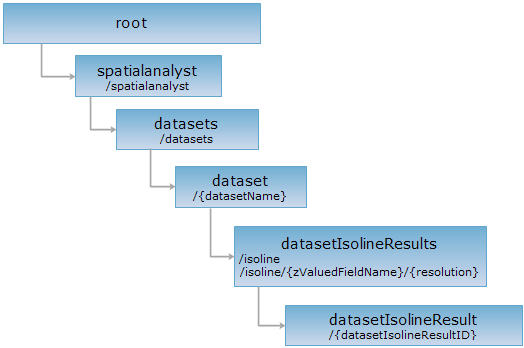
<datasetIsolineResults_uri>/{datasetIsolineResultID}[.<format>]
The datasetIsolineResult resource represents the result of isoline extraction analysis.
Supported methods:
Supported output formats: rjson, json, html, xml.

Below is an example of performing an HTTP request on a URI with rjson as the output format. supermapiserver in the URI is the name of the server.
http://supermapiserver:8090/iserver/services/spatialanalyst-sample/restjsr/spatialanalyst/datasets/SamplesP@Interpolation/isoline/1.rjson
Returns the description information about the retrieved resource of the extracting isoline analysis.
Normal response code(s): 200. The response structure is as follows after a GET request is performed on the resource:
| Field | Type | Description |
| succeed | boolean | Whether the spatial analysis was successful. |
|
message |
String | The returned message when the spatial analysis failed. |
| dataset | String | The ID of the result dataset. |
| recordset | Recordset | Recordset |
The following result in RJSON format is returned after a GET request is performed on the resource:
{
"dataset": "pointIsoline@Interpolation",
"message": null,
"recordset": null,
"succeed": true
}
Returns the same HTTP response header as GET does, but no response entity is included. HEAD request can be used to get metadata from the response message header without transporting the entire response content. Metadata includes information about the media type, character encoding, compression encoding, the length of the entity content, etc.
HEAD request can be used to check if the datasetBufferResult resource exists, or if the resource can be accessed by clients. It can also determine if the datasetBufferResult resource supports an output format <format> if performed on a URI with .<format> included.